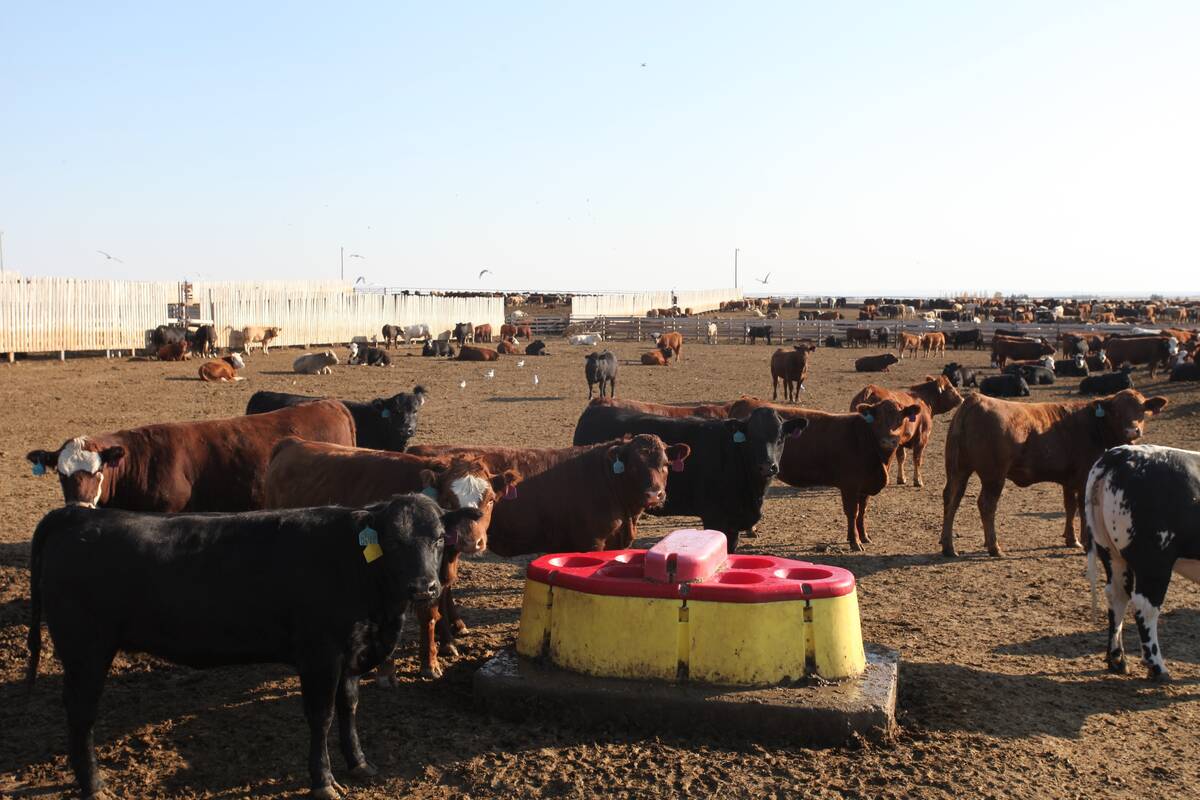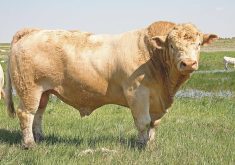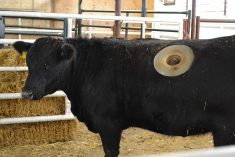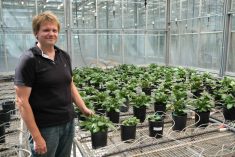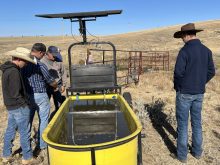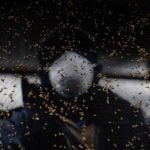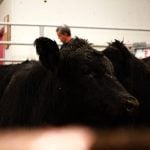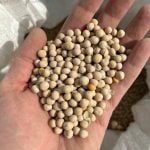Swabs from cattle’s water bowls can uncover excellent information about bovine respiratory disease and antimicrobial resistant genes, said Murray Jelinski, a professor at the Western College of Veterinary Medicine at the University of Saskatchewan.
About seven years ago, Jelinski read an Australian study that said one of the number one risk factors for spreading bovine respiratory disease was cattle sharing water bowls.
“We got to thinking, maybe there is something in the water. We’ve never looked at that,” said Jelinski, who holds the title of Alberta research chair for beef cattle health and production medicine.
Read Also

Grazing ‘sweet spot’ boosts pasture performance
Timing-focused approach to pasture management touted to boost forage growth, livestock gains while also cutting farmer labour and inputs
Around that time, Stuart Thiessen, owner of Namaka Farms, which has a large feedlot in Alberta, opened another feedlot in Outlook, Sask.
Jelinski said the opening of the new feedlot was an opportunity to do research in a feedlot that had never had a single animal in it. The researchers could examine the bacterial populations of water bowls and see how they changed as animals were added.

Viral and bacterial effects contribute to BRD. Animals become feverish and have trouble breathing. They stop moving around as much and reduce their eating and drinking.
Even before an animal walked into the new feedlot, there was already antimicrobial resistance present.
As animals were added to the feedlot, the number of resistant genes within the water bowl increased. There was already activity in the water bowls.
“You’re looking at a biofilm, a mass of bacteria that’s growing in those watering bowls, which is a great place to grow stuff because they’re heated,” he said.
Food from the animals’ mouths also falls into the bowls.
“If you go to any feedlot and look at the watering bowls, you probably see a kind of slime at the water area interface,” said Jelinski.
“That’s full of all sorts of environmental bacteria, and the more you treat, the more you’re going to see increased resistance,” he said.
The researchers wondered if they could find the bacteria that caused bovine respiratory disease in the water bowls.
Graduate student Daniel Kos began looking for certain types of bacteria related to BRD in the water bowls, but there was certain type of bacterium that could not be isolated from the others.
“The level of BRD pathogens in that watering bowl is going to be pretty low compared to all the environmental stuff that’s growing in there,” said Jelinski.
The team spent over two years trying to develop a media to isolate those BRD bacteria from other background bacteria.
“We could never do it,” said Jelinski. “We believe they’re there.”
The significance of how much BRD is in the water bowls is unknown.
Jelinski said monitoring water bowls for bacteria was much easier and much less time consuming than giving cattle a nose swab.
The team wanted to see if antimicrobial resistance could be monitored through the water bowls.
They were able to show that when more antimicrobials were used, antimicrobial resistance increased. Furthermore, they were able to find antimicrobial resistance for certain medications.
Kos looked at all the genomics data published by the National Centre for Biotechnology Information and analyzed that data as one data set. All researchers who do genomics research and publish must load their genomics data into NCBI GenBank.
Kos was able to find one of the shortcomings of the study by looking at 4,000 files of genomic data. Most of the data was unable to say where the cattle got sick from BRD. Even a person looking at the data and finding antimicrobial resistance wouldn’t be able to know basics such as whether an animal died with BRD or if the animal entered a feedlot with it.
Jelinski said the research showed that the North American profile for BRD pathogens are different than elsewhere.
“We have more antimicrobial resistance. It’s probably related to how we raise our cattle and larger feedlots. You don’t see 20,0000 or 30,0000 head feedlots in Central Europe,” said Jelinski.
Cattle in North America are raised using more antimicrobials, and using more antimicrobials results in more antimicrobial resistance. However, low levels of antimicrobial resistance genes can show up anywhere on the planet.
“But, no doubt, the more you use, the more you’re going to end up selecting for it,” he said.
Jelinski said additional research is being done to try to show a relationship between the antimicrobial resistance in agriculture and antimicrobial resistance that develops in humans. At this point, antimicrobial resistance has not crossed over from animal to human.
In the last couple of decades, health professionals have come up with prudent use guidelines to mitigate the use of antimicrobials, said Jelinski.
“You can do that, but you can only do it to some extent. Like in a hospital, you have to use antimicrobials. In a feedlot, you have to use antimicrobials,” he said.
The researchers found that some genes were basically able to shut down the antimicrobial resistance genes.
Sometimes there is a shift in the DNA that inactivates the gene as well.
“Why is this important? It’s because if I want to figure out what your antimicrobial resistance profile is in your feedlot, and in cattle, and I want to do it phenotypically by swabbing and plating and doing that, the problem with that is that takes time. It can take days, if not longer, to come up with the results, depending on the bacteria and how slow they’re growing,” he said.
Because of the speed and accuracy of results, everyone is moving toward genomics, he said.
“The problem there is you don’t always get a perfect fit, but it’s fast and relatively good,” he said.
About 10 or 12 years ago, it cost $1,000 to sequence a genome, and now it’s $100 and continuing to drop.
The next step is to look at probe capture, which involves taking a swab, grinding up all the DNA in the swab, sequencing it and reassembling it to find out that’s in there.
Probe capture allows researchers to basically pull the genes or types of genetic sequences of interest out of the sample, while the rest is washed away.
If there is a low-level antimicrobial resistance gene in a large sample, a researcher could use it with probe capture, pull out the sample and see it. The probe capture is much more discriminating and sensitive and can target specific genes the researchers want to see.
Currently, probe capture is more expensive and more time consuming, but Jelinski expects that could come down in time.


